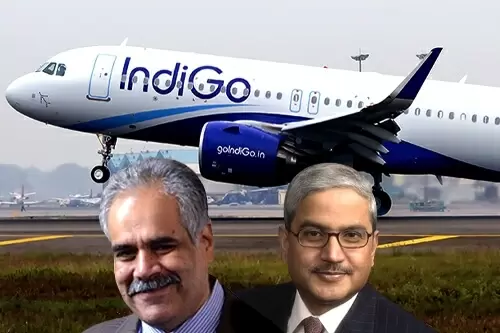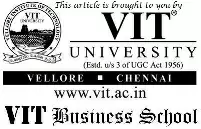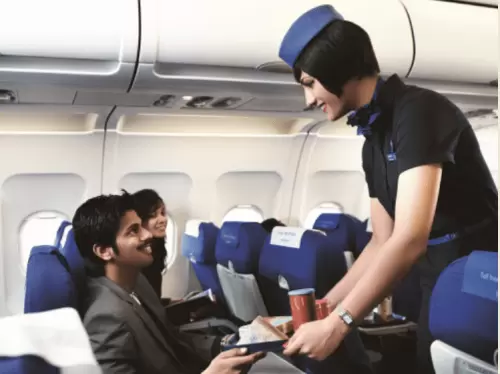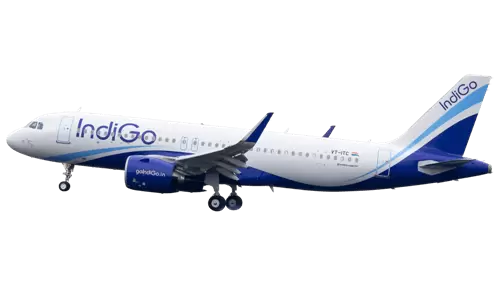How two visionary entrepreneurs built IndiGo airlines, currently valued at a whopping Rs 27,500 crore
24-December-2018
Vol 9 | Issue 52
IndiGo, India’s largest airline, currently valued at a whopping Rs 27,500 crore, is a testimony to the levels a company can grow if it is steered by visionary entrepreneurs like Rahul Bhatia and Rakesh Gangwal, who started the company with an investment of Rs 350 crore.
Today, IndiGo has a fleet strength of over 200 aircraft, operates over 1300 daily flights, employs 25,000 people, and has 126 offices located in 60 cities around the globe.
 |
|
IndiGo is India’s largest airline, which was founded by Rahul Bhatia (left) and Rakesh Gangwal in 2004 with an investment of Rs 350 crore (Photos: Special Arrangement - Design TWL Creatives)
|
When Rahul and Rakesh joined hands in 2004 to form InterGlobe Aviation, the owner of IndiGO Airlines, they were fully aware of the pitfalls of Indian aviation which had acquired the reputation of being airlines’ graveyard and where an operator’s fortune was much dependent on how well versed the promoters were in the art of managing the powers that be.
But overlooking the unwritten rules of the game, R and R went about their job in the most professional manner and scripted the most stunning success story in the history of Indian aviation.
 Credible studies indicate that the partnership model in business has had a much higher rate of failure than any other model, be it sole proprietorship or a limited liability structure.
Credible studies indicate that the partnership model in business has had a much higher rate of failure than any other model, be it sole proprietorship or a limited liability structure.
More often than not, people join hands for the purpose of making quick bucks but without sharing common ethos and common vision. A shallow partnership doesn’t last long. But there have also been many glorious exceptions that have defied this conventional wisdom.
Some of the most iconic brands that we know of today were created by the coming together of two very diverse set of individuals, who despite radically different personalities harmonized their respective strengths to shape up a common dream and turned their dreams into mega business empires.
Bill Gates and Paul Allen (Microsoft); Bill Hewlett and Dave Packard (HP) are just two examples of such enduring partnerships. Could they have done it on their own? Looks quite unlikely! A partnership can work if it is a partnership of shared vision and shared values – not if it’s just a partnership of convenience and connivance.
In the case of Rahul and Rakesh, personality wise, they are as different from each other as the chalk is from cheese, much like Steve Jobs and Steve Wozniak - the cofounders of Apple. But they brought their respective strengths to the table. Just like Woznaik who knew how to build a computer (he was the main guy who designed and developed Apple I and Apple II), Jobs knew how to market it.
At IndiGo, Rahul was the outgoing kind with a vision, while Rakesh was the reticent kind of guy who likes to go about a task quietly, and has been the mission implementer. While Rahul had an excellent sense of backend commercial arithmetic and the Indian regulatory environment, Rakesh was the man who knew how to run an airline having steered US Airways (one of the largest and oldest American airlines at the time) in the late nineties during some turbulent times.
 |
|
Cost cutting measures at IndiGo are not at the expense of service to customers
|
Rakesh’s special ability was number crunching and he knew from where to extract the margins even in most tight situations, something that proved critical and gave IndiGo an advantage over competition when operational cost for Indian operators started soaring.
He also had the negotiation skills to convince a company like Airbus to commit supply of 100 aircrafts to an airline which had not yet taken wings. Of course, his old relationship with Airbus - going back to his days at US Airways - did come handy, while Airbus at the time too was looking to firm up its footing in the Indian sky.
But most importantly, both Rahul and Rakesh had a shared dream of rewriting the script of Indian aviation. And they did it magnificently.
When the two dreamers came together, they were absolutely clear that they wanted to play the game in the most ethical way. Both Rahul and Rakesh shared common professional values and wanted to prove a thing or two to Indian aviation watchers.
They wanted to write a success story which was to be based on integrity and sound business principles. They were determined to play and win the game the fair way. And indeed, they went about their task in a very dignified manner, without indulging in shady deals or dubious means to gain advantage over competition.
Together, they conceived, shaped and implemented a plan which changed the script of Indian aviation forever. The duo built a profitable low cost carrier in quick time through meticulous planning and cost cutting measures. IndiGo employed lighter aircrafts and adopted various fuel cost control measures.
All this was done without compromising on quality of their service. IndiGo operates with a young crew and boasts of on-time, courteous service.
Contrast this to many other players who entered the Indian aviation scene and disappeared without a trace.
When the government reopened its aviation doors to private participation post 1992 (with many riders of course), there was a deluge of entrepreneurs who jumped in to launch air services. But most of them either wanted to make quick bucks (wrongly believing that aviation was a gold mine) or were receiving finances from shady sources.
One didn’t see ethical or intelligent or committed entrepreneurs taking the plunge. No wonder, most of them had a very short run, their ventures nose-diving quickly. But unlike many airlines that came up, one has not heard serious stories of any unethical or wrong doings by IndiGo.
 |
|
Flying high: IndiGo has emerged as the undisputed leader of the Indian skies
|
One important factor to remember in this success story is that aviation is not just a pure glam business as it might appear from outside. Not only common people but even policy makers and serious bankers are taken in by the drum beating and showmanship indulged in by some characters.
Often, we take the guy who makes most noise as the best guy to win the race. It’s perception game! Remember, how everyone had crowned Kingfisher and Vijay Malaya as the emperor of Indian sky. Bankers would go extra miles and bend every rule to accommodate his insatiable desire for public money but no one seriously insisted on financial accountability.
Even when Kingfisher had become totally hollow and pauper from inside, not many were ready to believe that it would crash so abruptly, least of all bankers.
In contrast to Kingfisher, IndiGo went about its task in the most meticulous, quiet and professional manner. When IndiGo started its services, it was the weakest player in terms of money bag. But what it lacked in terms of capital, it more than made up by forward planning and professional service.
Little wonder, when Kingfisher began diving, it was not Jet or Spice but IndiGo which was in the best position to fill the gap. As Kingfisher crashed, IndiGo soared!
To close, when two likeminded, intelligent and well intended people join hands, the power of 1+1 becomes 11!
Shelley Vishwajeet is the author of recently published ‘The IndiGo Story’ – Inside the Upstart that Redefined Indian Aviation' (https://rupapublications.co.in/books/the-indigo-story-inside-the-upstart-that-redefined-indian-aviation/) which is first of its kind book on Indian aviation, analyzing the rise of LCC phenomenon with IndiGo Airlines as the central protagonist. Shelley is a senior business and economic journalist and alumnus of SRCC and Law Faculty, Delhi University and Post-grad from JNU.
This Article is Part of the 'Amazing Entrepreneurs' Series
More Amazing Entrepreneurs














